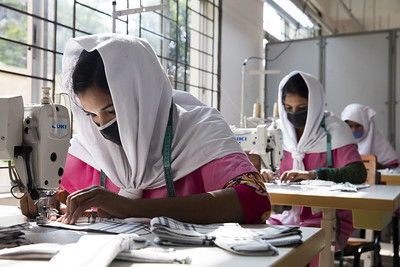
Data Analysis Assignment 2
Data Assignment 2 is due by 11:00 PM on September 29.
Overview
For this assignment, you will be exploring the role of ancestral characteristics in explaining women’s legal equality in the present. To do this, you will combine data from the Ethnographic Atlas with the World Bank’s Women, Business, and the Law database. The Ethnographic Atlas characterizes the characteristics of 1,291 pre-industrial societies; it was compiled by the antrhopologist George Murdock, who attempted to systematize the enormous amount of information recorded by ethnographers doing field work in traditional communities. Paola Giuliano and Nathan Nunn have used the Ethnographic Atlas to construct a data set mapping current populations to the attributes of the pre-industrial societies of their ancestors. We will be using their very cool data.
Getting and Cleaning Your Data
For your analysis, you will use this data set, which is a subset of the country-level data included in Professor Giuliano and Professor Nunn’s ancestral characteristics database. We are only going to be working with 12 of the variables included in the Ethnographic Atlas: those measuring monogamy, matrilocality and patrilocality, major crops, dieties, plows use, domestic animals, dairy production, sex segregation in the manufacture of cloth, sex segregation in the production of pottery, sex segregation in agriculture, inheritance systems, and norms surrounding premarital sex. These csv files (in the links) provide information on the 12 Ethnographic Atlas variables we are using and their coding. The Giuliano and Nunn data reports the percent of a country’ss current population whose ancestors fell into each of the categories included in the Ethnographic Atlas. The do file ECON460-data2-template.do includes code that cleans three of the variables in the Giuliano-Nunn data (on monogamy, matrilocality and patrilocality, and use of the plow), aggregating them up into a smaller set of variables to be used in the analysis. In addition to these three attributes of ancestral populations, you should pick two additional ones from the Giuliano and Nunn data that you will clean and include in your analysis. You will need to decide how to aggregate the Ethnographic Atlas categories for analysis.
You will be merging the Giuliano-Nunn data with the World Bank’s Women, Business, and the Law (WBL) database, which contains information on legal protections for women in 190 countries. You should download the Women, Business and the Law 1.0 Data for 1971-2024 in Stata format. The WBL data set tracks legal changes over time, so it contains data for every year from 1970 through 2023. For our main analysis, we’ll be using data for 2023. Before merging the WBL and plough data sets together, drop the other years from the WBL database. The do file template will help you with this.
Once you have your clean data set, save it as ECON460-YOURNAME-data2.dta. Save your cleaning do file as well.
Analysis
Your next step is to write an analysis do file that produces the following:
- A nicely-formatted, self-contained summary statistics table reporting the means, standard deviations, minima, maxima, and observation counts for the
WBL_indexvariable from the WBL data as well as the Ethnographic Atlas variables constructed in your cleaning do file. - A horizontal bar graph (Stata command:
graph hbar) showing the mean of theWBL_indexvariable by World Bank country region. Make sure that the bars/regions are sorted in order of increasing or decreasing length and that you’ve labeled the horizontal axis appropriately. - Two nicely-formatted regression tables: (1) one showing (five total) regressions of
WBL_indexon each of the five groups of Ethnographic Atlas variables plus a sixth regression which includes all of your Ethnographic Atlas variables simultaneously, and (2) a second regression table which includes the same independent variables of interest, but controls for region and income group fixed effects.
Once you’ve produced these pieces of analysis, you should produce a short written brief or memo describing your findings. Please be sure to describe each of your tables and figures in the text.
When you complete the assignment, you will upload the pdf of your written piece (including the tables and figures), your cleaning/merging do file, and your analysis do file.